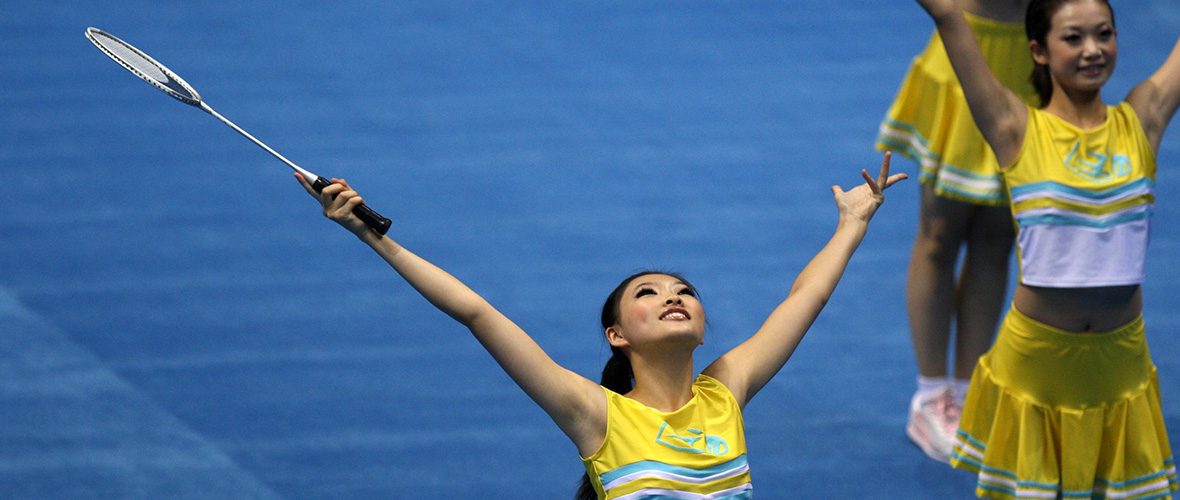THE HISTORIC JOURNEY OF THE BWF WORLD CHAMPIONSHIPS
The BWF World Championships stand alongside the Olympics as the ultimate test for any badminton player. Since its beginnings in 1977, the event has evolved over 27 editions. Here is its historical journey:
The World Championships may be relatively new compared to the history of organised competition in the sport, but the event did not take long to grow into the true test of the top individual players and pairs in world badminton.
The All England Championships were already functioning as an unofficial world championships for the individual disciplines. While from the late 1940s, the Thomas Cup — and later the Uber Cup — offered a unique opportunity for men’s and women’s teams to prove themselves as the world’s best, athletes were already able to prove themselves individually. The All England had been providing that opportunity with class and prestige and a tradition that dated back to the dawn of the 20th century.
However, while England may have welcomed the best in the world, there was still room for a world championships. When Sweden hosted the first World Championships in 1977, it was a first step for an event that would soon travel and grow into a global tradition. By the time the fourth edition ended, the Worlds had been held in three continents.
The early winners
The big winners at the inaugural Worlds in 1977 were Denmark. Danish shuttlers descended on their northern neighbours and took three of the five titles, with Lene Køppen winning gold in both singles and doubles. At the 1980 event in Jakarta, hosts Indonesia took all but one title.
China made their entry at the 1983 edition and made their presence felt by winning gold in women’s singles and doubles. From then on, China remained a powerhouse; in 1987 they swept all five gold medals — a feat they repeated in 2010 and 2011.
Korea too were first-time participants in 1983, and would go on to become one of the dominant powers in the sport.
While historically, only a few nations (China, Indonesia, Denmark, Korea) dominated the sport, in recent years it has become more open. Japan re-emerged as a power after a long period of modest performances, while teams like Thailand, India and Singapore are constantly in the reckoning for the big prizes.
An annual summer fixture
The World Championships began as a triennial event, filling the year left vacant between the Thomas Cup and Uber Cup. After the third edition in 1983, the event became biennial, alternating with the two team championships, which became a combined biennial event from 1984. Two decades later, the frequency changed again and the 2006 World Championships in Madrid marked the first time the Worlds had been held in consecutive years. The event continued as a nearly annual affair, taking a break only once every four years, when the Olympic Games would take over as the major event of the summer.
The format
The original rules required member associations to submit their player entries to the IBF (now BWF) in advance with a maximum of four entries in most disciplines and two for men’s and women’s doubles. When more than 64 players entered in a discipline, a qualifying event was held less than a week before the start of the main draw, which followed a knockout format.
As the IBF developed its world ranking system, it became the basis for determining qualified players. The number of participants varied over the years, as did the limits on entries per member association in one discipline, with some teams able to send as many as six men’s singles players in the early 1990s.
The BWF rules on qualification became more streamlined in 2010. A maximum of four entries per discipline could be invited from any one member association and at least one representative in each discipline was invited from each of the five continental confederations.
Increasingly open
In all categories, the competition has become intense, and no country is able to dominate it in the manner they used to. A number of countries have gold for the first time in recent years, such as Ratchanok Intanon (Thailand, 2013), Carolina Marin (Spain, 2014), Loh Kean Yew (Singapore, 2021), and Pusarla V Sindhu (India, 2019).
At the 27th edition in Tokyo, four countries (Denmark, Japan, Malaysia and China) won gold medals. Aaron Chia/Soh Wooi Yik’s gold in men’s doubles was Malaysia’s first-ever at the World Championships.
Return to Copenhagen
The 28th edition of the World Championships in August 2023 will be in Copenhagen, which will host the event for a fifth time, the highest among all hosts. The Danish capital previously hosted the event in 1983, 1991, 1999 and 2014.
FAQs
When and where were the first World Championships held?
The first World Championships were held in 1977 in Malmo (Sweden).
How has the frequency of staging it changed?
In the beginning, the World Championships were conceived as a triennial event. The event debuted in 1977 and the next two editions were in 1980 and 1983. From the fourth edition (1985) on, it became a biennial event. This continued until 2005, after which it became an annual event. The World Championships are now held every year except during the Olympic year. An exception was 2021, when the Tokyo 2020 Olympics and the World Championships 2021 were held in the same year due to the postponement of the Olympics from 2020.
Which has been the most dominant nation in the World Championships?
China have been the most dominant nation, winning 69 gold medals. The second highest is Indonesia, with 23 gold medals, followed by Denmark and Korea.
Have any non-Asians/non-Europeans won a World Championships medal?
USA’s Howard Bach/Tony Gunawan won men’s doubles gold at the 2005 World Championships in Anaheim, USA. New Zealand’s Daniel Shirley/Sara Runesten-Petersen won mixed doubles bronze at the same event.
Who has won the most medals overall?
China’s Zhao Yunlei holds the overall record with 10 medals, including 5 gold, 2 silver and three bronze. Among the men, Lin Dan (China) and Park Joo Bong (Korea) have the highest number of titles, with five gold medals each.





























